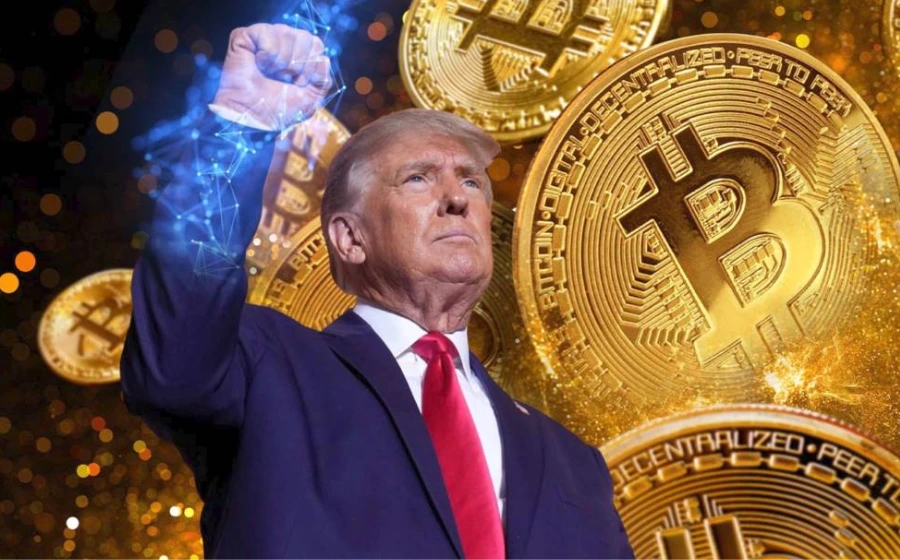
KEYTAKEAWAYS
-
FTX Judgment’s Legal Implications: The conviction of Sam Bankman-Fried for fraud and conspiracy showcases the urgent need for tighter regulations in crypto markets to protect investors and maintain market integrity.
-
Impact on Crypto Regulation: The case highlights critical regulatory gaps in crypto exchanges, pushing for global standards and clearer frameworks to ensure transparency and user protection.
-
Guidelines for Exchange Selection: The FTX debacle stresses the importance of selecting crypto exchanges with robust security measures, transparent operations, and regulatory compliance to prevent similar frauds.

CONTENT
*This article was originally published in Chinese and on the Blog- Code and law.
INTRODUCTION
When FTX Exchange declared bankruptcy and entered the judicial reorganization in 2022, it marked a significant turning point not only for the crypto asset industry but also had profound implications for global financial regulation and investor protection. The collapse of FTX exposed the risks and regulatory gaps in the crypto asset market, sparking global attention and discussions on the transparency of crypto asset exchanges.
On March 28, 2024, in the trial of Sam Bankman-Fried (SBF), the former founder of FTX Exchange, SBF was sentenced to 25 years in prison by the United States Southern District Federal Court in New York after being convicted of seven counts of wire fraud and conspiracy.
The significance of this judgment extends beyond the management of substantial financial and customer assets, touching upon fundamental questions of how to protect investors in the absence of strict regulatory frameworks in the crypto market. The bankruptcy court’s ruling highlighted issues in the exchange’s fund management and how the defendant deceived users and creditors, as well as internal fund control failures within the company.
This case will have a significant impact on future crypto asset legal and policy formulation, particularly on how to strike a balance between innovation and user protection. With the approval of Bitcoin ETFs and the gradual emergence of crypto assets as a mainstream investment option, the outcome of this legal battle will set an important foundation for the regulatory framework of the global crypto market.
WHAT DID THE FTX JUDGMENT TELL US?
In the FTX judgment, aside from stating that SBF committed fraud against FTX customers, investors, and Alameda creditors, his criminal behavior also included bribery of officials from the United States and China governments, deceiving Silvergate Bank, and evading legal responsibilities after bankruptcy. Within the judgment text, SBF was found guilty of the following seven charges:
- Wire fraud on FTX’s customers
- Conspiracy to commit wire fraud on FTX’s customers
- Wire fraud on Alameda Research’s lenders
- Conspiracy to commit wire fraud on Alameda Research’s lenders
- Conspiracy to commit securities fraud on FTX’s investors
- Conspiracy to commit commodities fraud on FTX’s customers
- Conspiracy to commit money laundering
The judgment also points out that his criminal behavior can be mainly categorized into three aspects:
- Fraud on Users: FTX promised users that their funds would be securely held and not used by the company. However, FTX illegally transferred user funds to its affiliated company, Alameda Research, for the company’s operations and investment activities. This behavior violated the trust of customers and FTX’s service terms.
- Fraud on Investors: SBF assured investors that FTX had a sound risk management system and that Alameda did not receive any special treatment on the FTX platform. However, FTX allowed Alameda to borrow from FTX client accounts and utilize substantial credit lines through special encoding, a practice conducted secretly and contradictory to SBF’s statements to investors.
- Fraud on Creditors: FTX and Alameda provided manipulated financial information and balance sheets to creditors, concealing Alameda’s massive liabilities and illegal use of FTX funds, which led creditors to continue lending to Alameda without being aware of the situation, ultimately resulting in losses due to FTX’s bankruptcy.
These fraudulent activities involved complex financial operations and false representations, seriously violating legal regulations and ethical standards. They harmed the interests of tens of thousands of users and investors, ultimately leading to the collapse of FTX and significant economic losses. These actions not only undermined the trust of customers and investors but also harmed the overall health development of the cryptocurrency market.
FIVE INDICATORS TO MEASURE THE SECURITY OF A CRYPTO EXCHANGE
Looking at the FTX judgment, it is evident that there were many operational loopholes for the exchange before regulatory measures were fully implemented, leading to potential risks for users. So how can users avoid these risks when choosing reliable exchanges? Below, we would like to analyze five aspects to identify the criteria for selecting a secure exchange:
1. Exchange Licensing and Registration:
- Licensed Exchange and Registration Country:
Choosing a licensed exchange means that the exchange must comply with the regulations and standards of the specific country. At the very least, understanding the basic regulatory framework through the regulations of that country allows you to grasp the regulatory risk management structure that the exchange should adhere to. Additionally, the government of the registering country will supervise the exchange based on certain principles of financial supervision. Through a basic understanding of these regulations, you can know the official channels and means for recourse available when risks occur. Furthermore, evaluating the regulatory standards based on the country or region where the license is issued allows for an assessment of the level of supervision.
- Company Location:
Considering the location of the company involves assessing how one can use legal means to directly seize or freeze the assets of the exchange if it encounters problems or is on the verge of bankruptcy. It’s important to evaluate whether handling the issue would involve cross-border overseas processes after the problem or bankruptcy arises. This evaluation helps determine whether it’s convenient to select an exchange based in a jurisdiction where asserting one’s rights would be easier.
2. Company Information Transparency:
- Public Financial Reports:
Exchanges providing public financial reports enable users and investors to understand the company’s financial health better. This includes information on investments, expenditures, and asset utilization.
- Channels for Claiming Rights:
It is important to know Whether the company provides users with sufficient information. When users encounter problems or difficulties, they should have channels through which they can claim their rights. It’s essential to assess whether there are government or third-party channels available for users to file complaints if they encounter issues.
3. Handling of User Assets:
- User Asset Management and Fund Segregation:
In the case of FTX, the founder’s ability to conduct additional financial operations when withdrawing user funds without significant restrictions led to severe subsequent damages. Therefore, it is crucial to ensure that the exchange has strict policies for segregating customer funds from its own. Customer funds should be kept in separate accounts and not used for any unauthorized transactions or lending. Additionally, the presence of internal control systems should be assessed, such as whether the withdrawal of company assets requires specific procedures and hierarchical review standards. Furthermore, it may be prudent to consider whether customer assets are entrusted to a professional third-party custodian to mitigate the impact of company bankruptcy on customer assets.
- Transparent Deposit and Withdrawal Processes:
When choosing an exchange, it’s also important to examine the transparency of its deposit and withdrawal processes. Ensure that the withdrawal process is transparent and easy to understand, and check if there are any withdrawal limits in place to avoid users encountering any restrictions when attempting to withdraw funds.
- Asset Custody Methods:
Verify what technical storage solutions the exchange employs to safeguard its own cryptocurrency assets. Are they stored in hot wallets or cold wallets, or does the exchange use wallet custody technologies provided by professional service providers (such as multi-signature wallets or wallets utilizing MPC calculations)? Check if third-party technical custody services are involved and whether the company has robust information security measures in place, including mechanisms for reporting security incidents.
4. External Risk Control Measures:
- Risk Management Policies:
Researching the exchange’s risk management measures, including its ability to handle market volatility and strategies for risk control, such as corresponding asset reserves.
- Insurance and Guarantee Funds:
Verifying whether the exchange has appropriate insurance measures to protect customer assets, such as providing funds compensation in the event of hacking or other security incidents.
5. External Audit:
- Third-Party Custody:
As mentioned earlier, company assets can be transferred to third parties to achieve so-called asset risk isolation. This also involves whether the company’s asset custody uses security wallet services provided by third parties. Since this involves third-party services, we should also examine the reputation of the third party, whether they have obtained qualified custody licenses, and the third party’s level of information security protection.
- External Audit:
Considering whether the company’s claims are authentic, we should also consider financial transparency and internal controls. Regarding the company’s disclosed financial information and internal control processes, it’s important to have additional independent third-party institutions (such as accountants or lawyers) conduct additional certifications and checks from an external perspective to ensure the company’s actual operations align with its claims or compliance with regulatory standards.
CONCLUSION
FTX rapidly grew into the world’s second-largest cryptocurrency exchange in just three years. In the early stages of development, it boasted user-friendly features such as facilitating short-term and contract trading. Coupled with substantial marketing budgets, advertisements, and endorsements from government officials and cryptocurrency key opinion leaders (KOLs), users believed FTX was a trustworthy and well-run exchange. However, despite being a world-class exchange, it declared bankruptcy within a week and was subsequently exposed for deceiving users and unlawfully misappropriating customer funds by its founder, SBF. FTX cases and its judgment highlighted three main issues: the lack of segregation between customer and company assets, unclear financial information, and the absence of third-party verification of their statements and internal control processes, leading to discrepancies between their claims and actual practices, deceiving users.
When choosing an exchange, relying solely on advertising and marketing popularity to judge whether an exchange is user-friendly without truly understanding the underlying company’s operations and trading volume patterns may lead to confusion about how to assert rights or recognize fraudulent exchanges when risks arise. Following past cryptocurrency exchange fraud patterns, fraudulent groups often allocate their entire budget to advertising and marketing, enticing users with various profit-reward models. Users should be wary: while users focus on the potential “profits” from their invested money, fraudsters focus on the “principal” money invested by users.
Therefore, when selecting a cryptocurrency exchange, users should consider not only the benefits and reputation of the exchange but also focus on ensuring the safety of their funds and the legality of transactions when risks arise. This can be done by first assessing whether the exchange is licensed and its jurisdiction, and whether government supervision is involved. Users can also consider the exchange’s transparency and whether it has a customer fund segregation system. Finally, users should examine the exchange’s statements and financial information, whether it has implemented risk mitigation measures, and whether impartial third-party institutions verify its claims and regularly release financial reports and security audit results. Users should not solely rely on reputation and user feedback to judge an exchange.
Users can use the above five criteria to comprehensively assess the risks of exchanges, thereby better filtering exchanges and considering how to safeguard their investment funds and avoid unforeseen risks, preventing financial risks and legal issues similar to the FTX case.
















